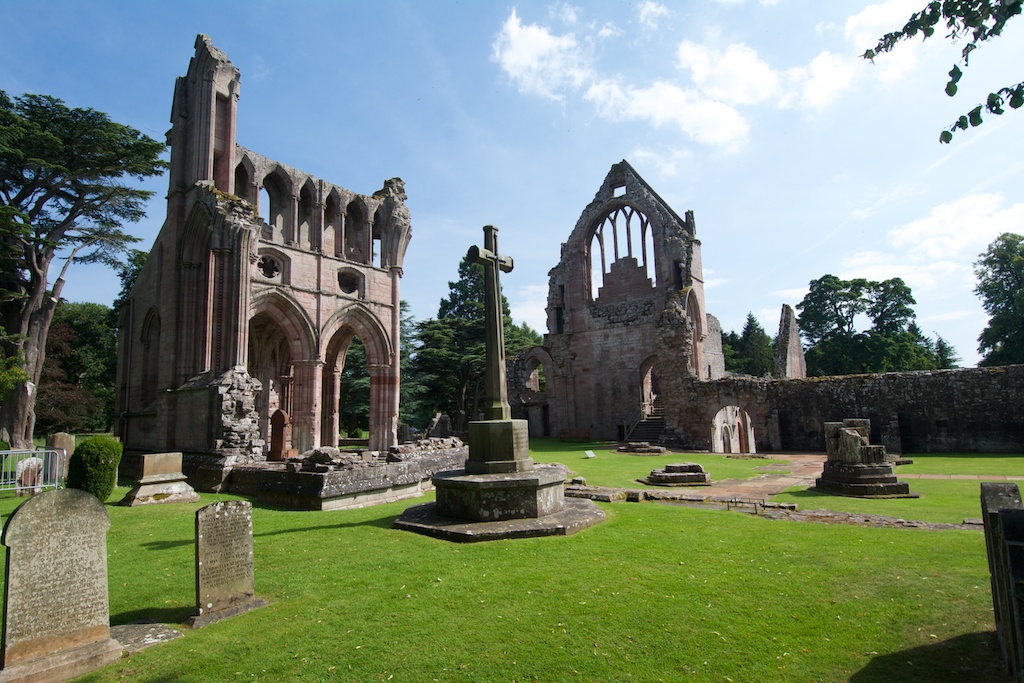
Dryburgh Abbey
“There are narrations, from which it is inferred that Dryburgh was originally a place of Druidical worship; its name is supposed to come from the Celtic ‘Darach-Bruach’ or ‘the bank of the sacred grove of oaks,’ the settlement of the Druids.” The Gentleman’s Magazine, October 1832
Some of the places I visit make me wonder whether the feeling of deep stillness existed before they were built, or whether it came about because of the devotion and serenity of the people who lived there afterwards.
Dryburgh Abbey is one of those places.
The first Christian worship at Dryburgh may have taken place around 600 AD, when a missionary called St Modan – or some of his followers – chose a loop in the River Tweed for the location of a simple church. However, no physical evidence of this has yet been found.
It was down to Hugh de Moreville in 1150 to make the next step, when he invited a group of Premonstratensian monks to settle by the river. De Moreville was a local landowner and a friend of David I; in later life he became a novice at the Abbey, and died there in 1162.
Premonstratensians
In the course of my abbey wanderings I’ve come across Augustinians, Cistercians, Culdees, Tironesians, Valliscaulians… but I’d never even heard of the Premonstratensians. The name comes from Prémontré in Northern France, which is where the order originated. The Premonstratensians are an order of white-robed canons, and by the 12th century they had six Scottish houses including Whithorn in Galloway. The monks who came to Dryburgh were from Alnwick Abbey in Northumberland.
The work of building an abbey and its attendant church was a huge and long-lasting task, and it seems to have taken the best part of a century. The result was magnificent, but unfortunately it was only about 70 years before trouble came knocking at the door.
Edward II and his Scottish campaign
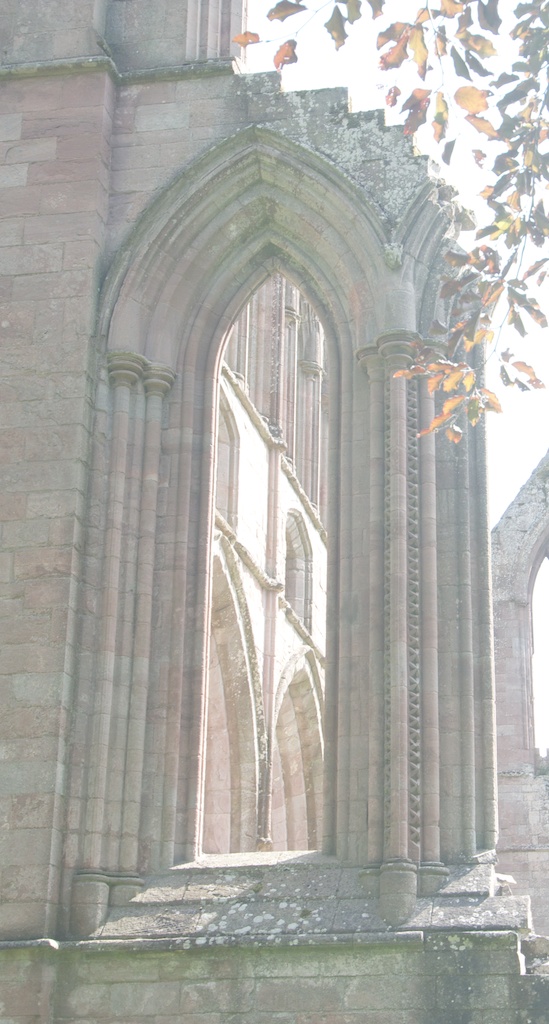 In 1314 Robert the Bruce had trounced the English at Bannockburn, but in 1322 Edward II mounted a comeback and advanced across the border with a force of over 20,000 men. The Bruce outwitted him again, withdrawing his own troops further north and laying waste to the countryside in their wake, making sure that the English army either halted or starved.
In 1314 Robert the Bruce had trounced the English at Bannockburn, but in 1322 Edward II mounted a comeback and advanced across the border with a force of over 20,000 men. The Bruce outwitted him again, withdrawing his own troops further north and laying waste to the countryside in their wake, making sure that the English army either halted or starved.
His tactics worked, and the weakened soldiers began to file back across the border country. At Scottish churches and priories the order was given to ring the bells and declare the good news to the countryside… but unfortunately for Dryburgh, the command came just a little too soon. When the peals reached the offended ears of the retreating English, some of them made a swift detour and burned the abbey down.
Robert the Bruce made a generous contribution towards the abbey’s repair; but, far from being a one-off event, the attack seemed to set a precedent for future centuries. The abbey was burnt again in 1385, 1461 and 1523, meaning that it must have been in an almost continuous state of re-building. That ‘protective’ loop in the river was obviously no deterrent at all.
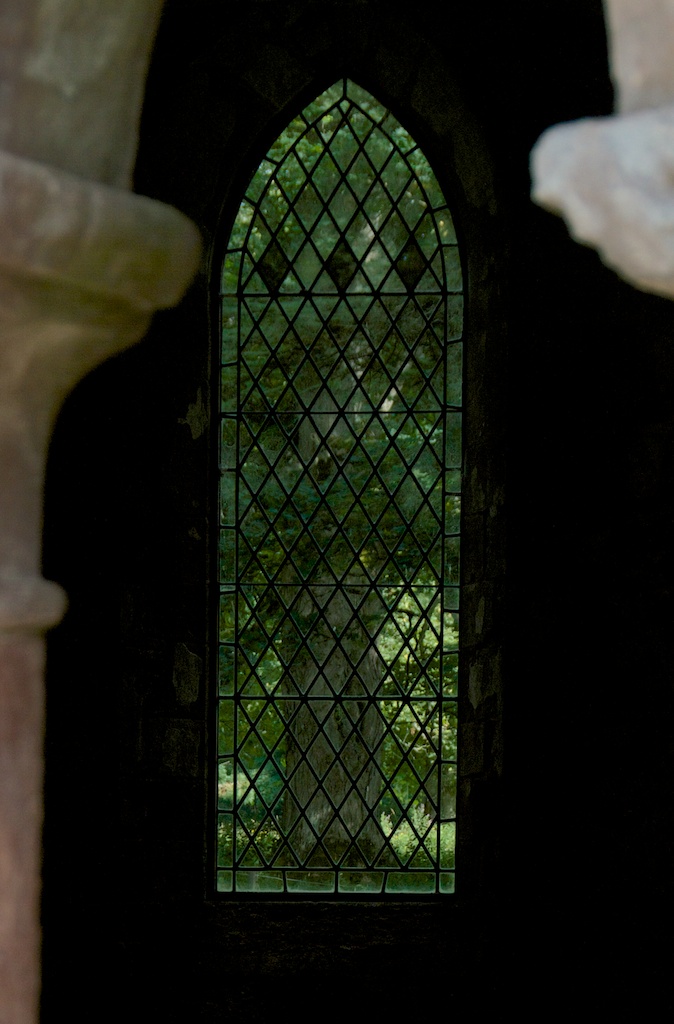 In 1544, an English raid destroyed both the abbey and the neighbouring town:
In 1544, an English raid destroyed both the abbey and the neighbouring town:
“Upon Friday the vii of November… Sir Geo. Bowes and his company, Sir Brian Layton and his company, Harry Ewry, Liell Gray, porter, and the garrison of Barweck; John Carre, captain of Wark, and his company, Thomas Beamond, Geo. Sowlby, Launcelot Carlton and their companies, to the number of vii hundred men, rode into Scotland, upon the water of Tweede, to a town called Drybrough, with an abbay in the same… and they burnt the same town and Abbay, savying the church… and they tarried so long at the said burnynge and spoilage, that it was Satterday at viii of the cloke at nycht or they com home.” Account by Lord Eure quoted in the Cotton Manuscripts, via The Gentleman’s Magazine, Oct 1832
If the church survived the raids it was no match for the Reformation, and by 1560 it stood in ruins. Life wasn’t quite extinct, however: records show that there were still two plucky canons in residence in 1584. Mercifully, they were allowed to continue their lives at Dryburgh in peace.
David Erskine, 11th Earl of Buchan, acquired the Abbey in 1786, and dedicated much of his life to preserving the ruins. With the Victorians’ passion for Gothic romance and crumbling splendour, it isn’t hard to see why Sir Walter Scott chose Dryburgh as his last resting place. He is buried in the north transept of the church, otherwise known as St Mary’s Aisle, alongside Earl Haig of Bemersyde and members of the Haliburton family. Above this transept, in former centuries, would have been the choristers’ gallery.
The funeral of Sir Walter Scott – 26th September 1832
“It was late in the day ere we reached Dryburgh. Some accident, it was observed, had caused the hearse to halt for several minutes on the summit of the hill at Bemerside – exactly where a prospect of remarkable richness opens, and where Sir Walter had always been accustomed to rein up his horse. The day was dark and lowering, and the wind high.”
John Gibson Lockhart – Memoirs of the Life of Sir Walter Scott
At first glance the church feels strangely fragmented because parts of it have disappeared altogether, but once you have worked out where the altar was the rest falls into place. The living quarters have fared better, and it’s possible to wander in and out of the dormitory, library, cloister, warming house and refectory.
“The refectory, or great dining-room of the Monks… occupied the whole front of the Abbey facing the south: it was 100 feet long by 30 broad, and about 60 high; the two gable ends are still perfectly entire – in the west one is the beautiful radiated window, it is a complete circle, about 12 feet in diameter – it is said the small circle in the centre represents the Saviour, and the 12 spokes proceeding from the centre to the radius represent the 12 Apostles.” ‘Annals and Antiquities of Dryburgh and other places on the Tweed’ by Sir David Erskine, 1836
The Chapter House
“The cloister retains its feeling of privileged enclosure. Its highlight is the 13th century chapter house, which still has precious painted wall-plaster surviving, and a wonderful acoustic.” Historic Scotland
Of all the narrow, winding stairs I have climbed (and there have been a few), the one at Dryburgh has the best ‘surprise factor’, because it leaves you literally stranded in mid-air, protected only by an iron rail, looking dizzily down on the ruins and seemingly at arm’s length from the tops of the tall trees in the park.
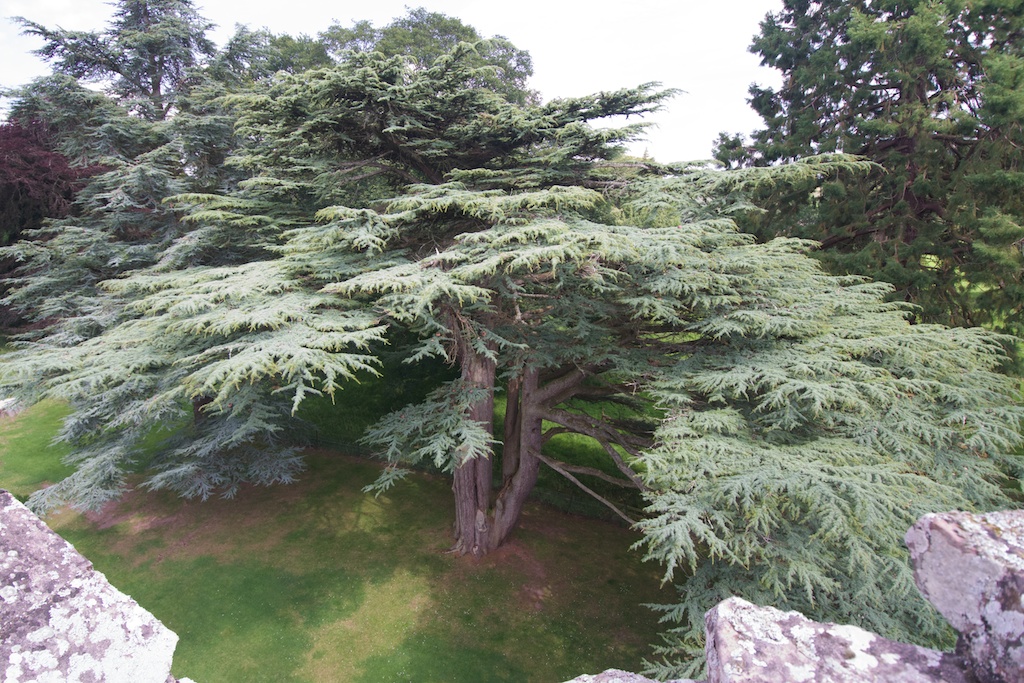
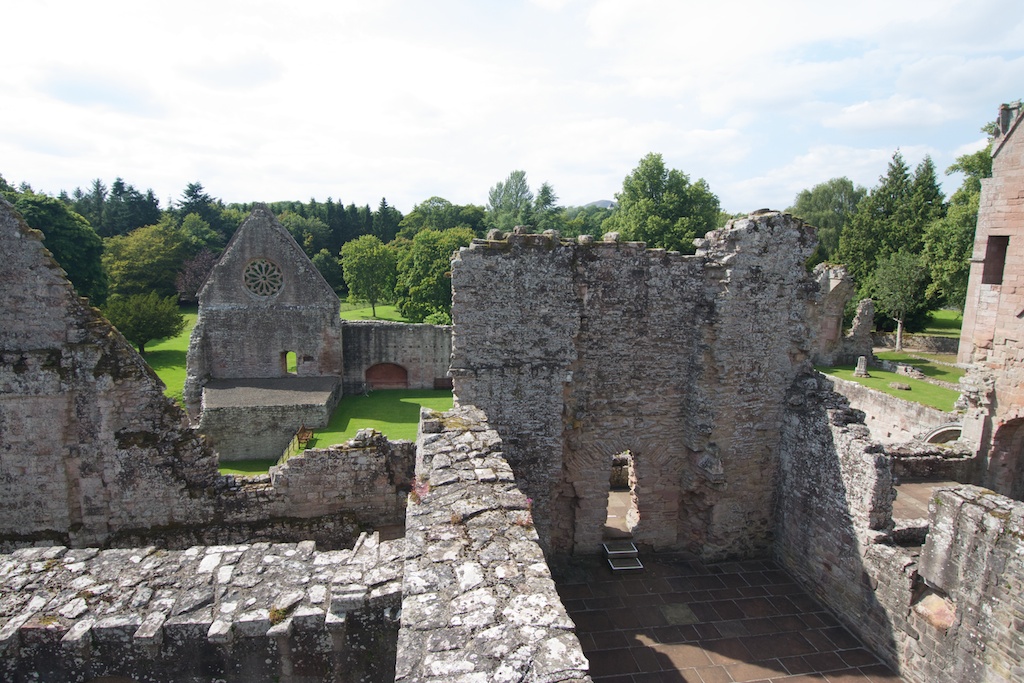
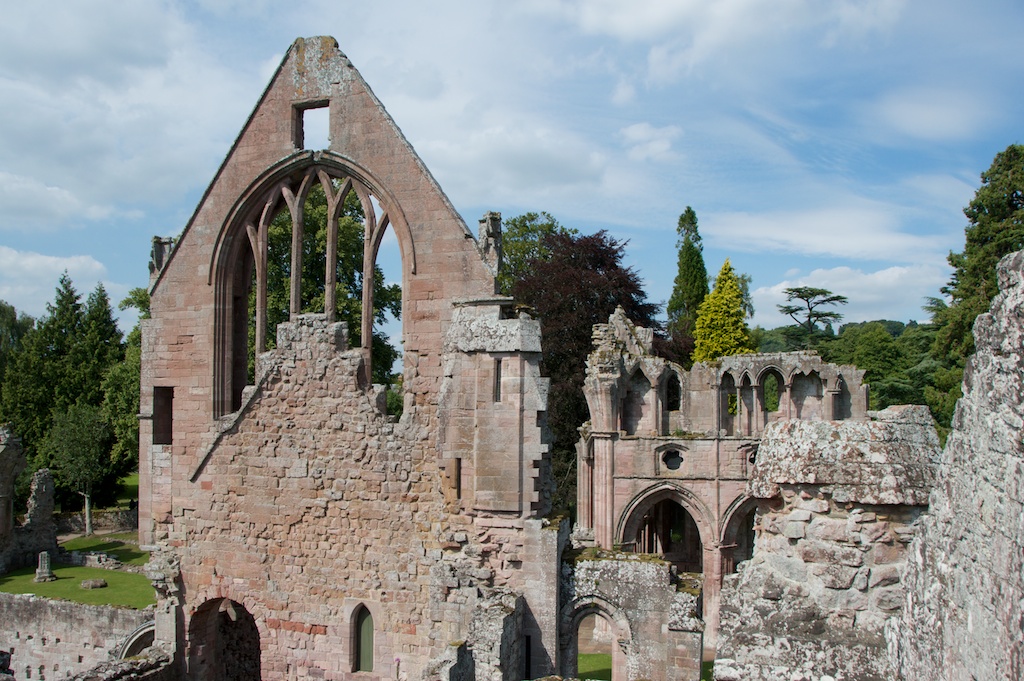 Above the beautiful harp window is a square opening, thought to have housed the matin and vesper bell
Above the beautiful harp window is a square opening, thought to have housed the matin and vesper bell
“…this Abbey was repeatedly visited by the ancient Kings of Scotland; David I and James II are known to have passed many days here…”
‘Annals and Antiquities of Dryburgh and other places on the Tweed’ by Sir David Erskine
THE TREES OF DRYBURGH ABBEY
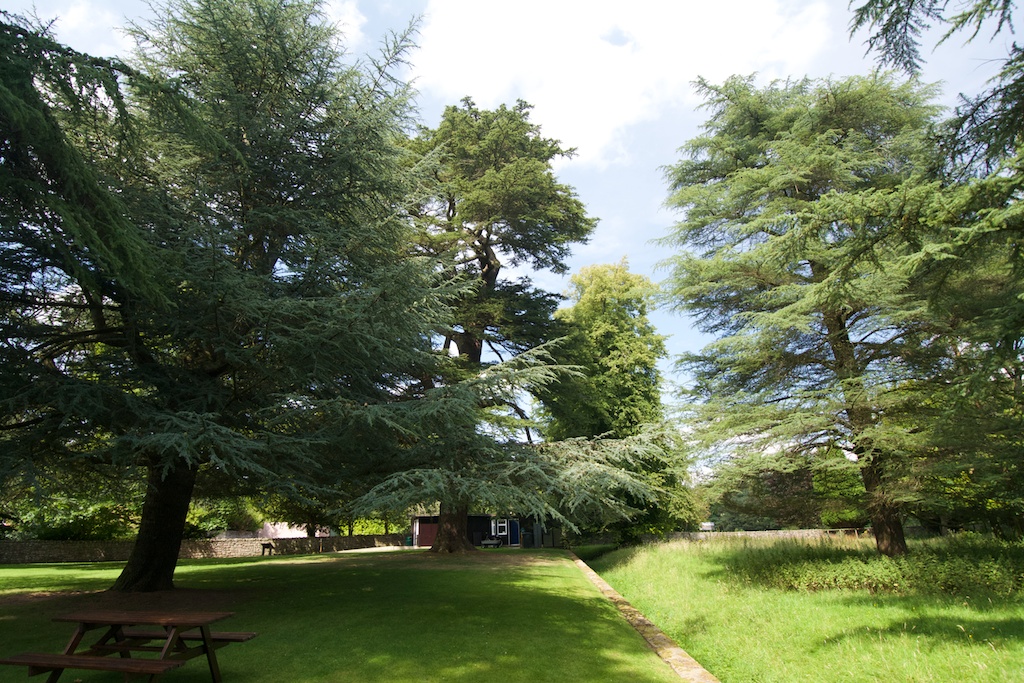 Before you even glimpse the sandstone ruins, the path through the grounds leads you past some huge trees, giants by Scottish standards at least, including a Wellingtonia and a blue-green cedar that was laden with cones. I am beginning to think that time slows down around very large and very old trees – on a warm afternoon, their coolness and shade made me feel as if I was stepping into a pool.
Before you even glimpse the sandstone ruins, the path through the grounds leads you past some huge trees, giants by Scottish standards at least, including a Wellingtonia and a blue-green cedar that was laden with cones. I am beginning to think that time slows down around very large and very old trees – on a warm afternoon, their coolness and shade made me feel as if I was stepping into a pool.
The Dryburgh Yew
Believed to have been planted by the monks of Dryburgh in 1136, this veteran is well on its way to being 900 years old. In 1837 its girth measured 12 feet, and in 1890 it was 14’3”; I cannot find a more recent statistic, but the tree is still in vibrant health. I always despair when I try to photograph yew trees: they seem to have no beginning and no end, no defined edges and no recognisable shape. It’s almost as if they are embracing the infinite in every possible way!

Harp of the North, farewell! The hills grow dark,
On purple peaks a deeper shade descending;
In twilight copse the glow-worm lights her spark,
The deer, half-seen, are to the covert wending.
Resume thy wizard elm! the fountain lending,
And the wild breeze, thy wilder minstrelsy;
Thy numbers sweet with nature’s vespers blending,
With distant echo from the fold and lea,
And herd-boy’s evening pipe, and hum of housing bee.
Sir Walter Scott
More information on visiting Dryburgh Abbey can be found at Historic Scotland.
Sources:
- Historic Scotland
- Undiscovered Scotland
- The Heritage Trail
- The Order of Prémontré
- ‘Annals and Antiquities of Dryburgh and other places on the Tweed‘ by Sir David Erskine
- ‘Memoirs of the Life of Sir Walter Scott‘ by John Gibson Lockhart
- The Gentleman’s Magazine, Oct 1832
- The Ancient Yew Group
Photos copyright © Colin & Jo Woolf
More medieval abbeys in the Borders and south-west Scotland:

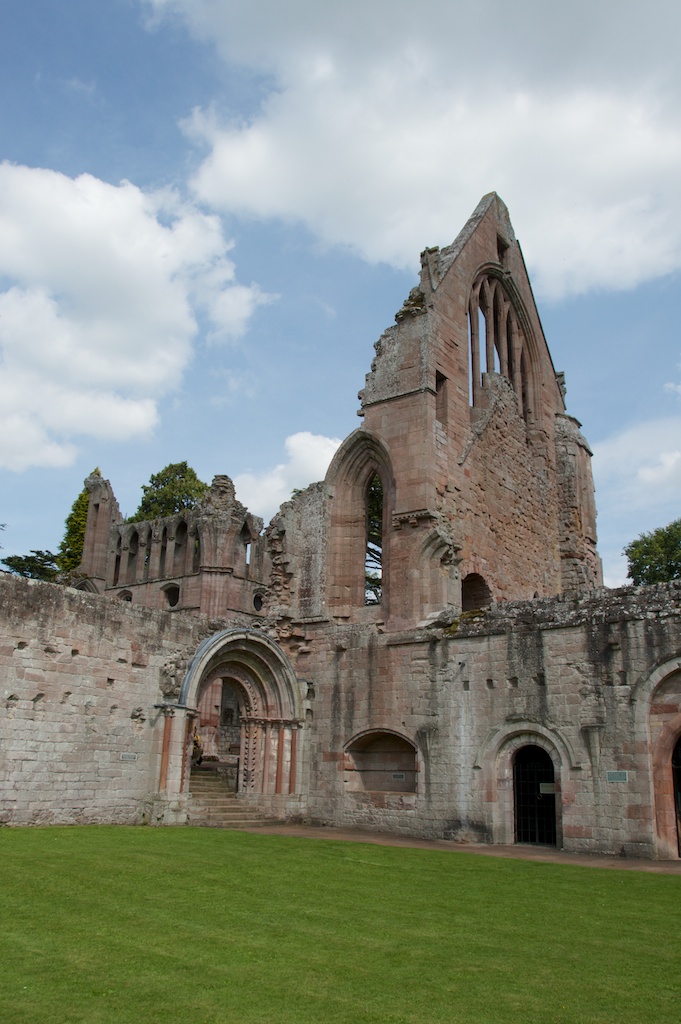
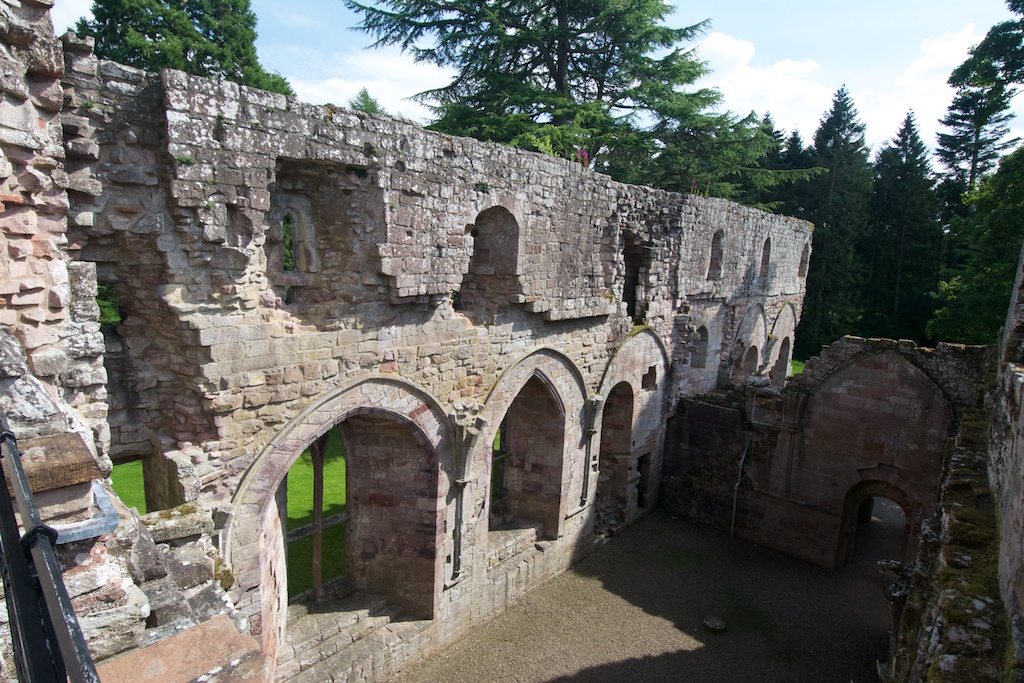
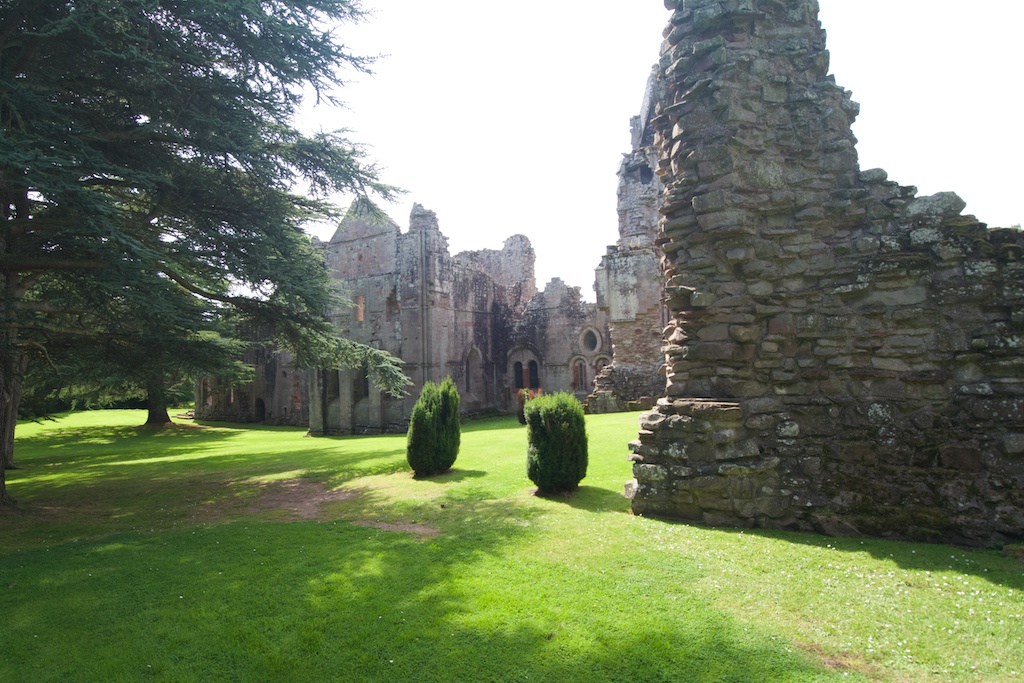
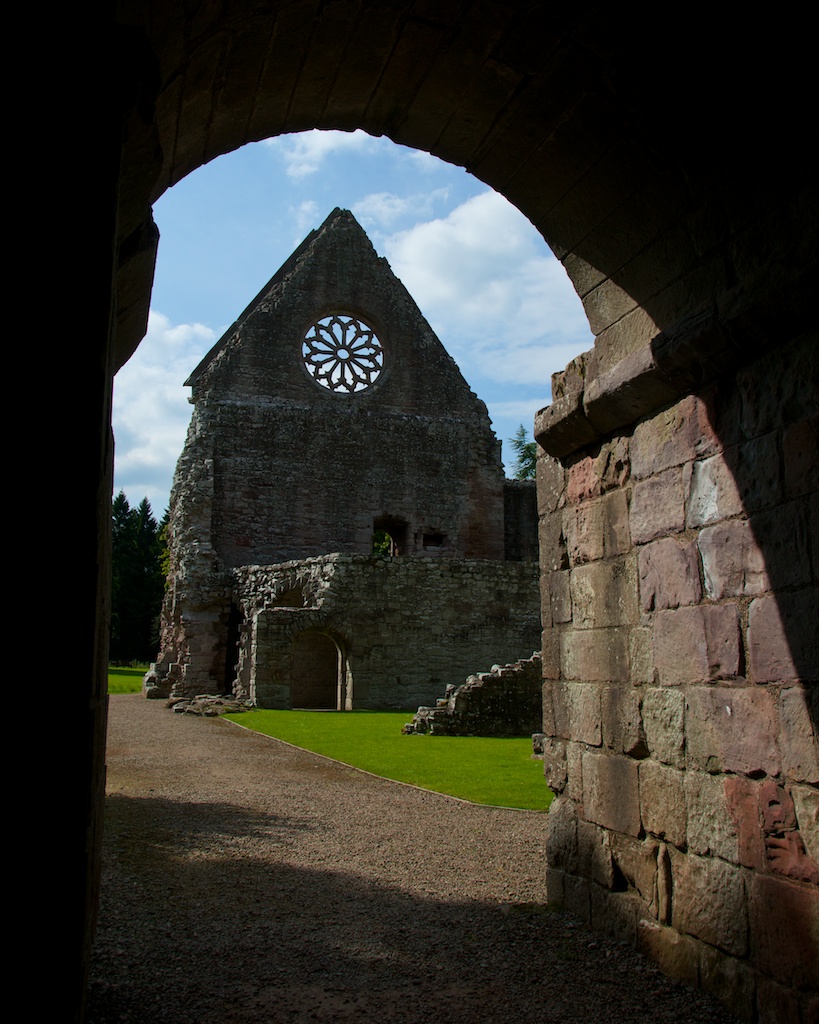
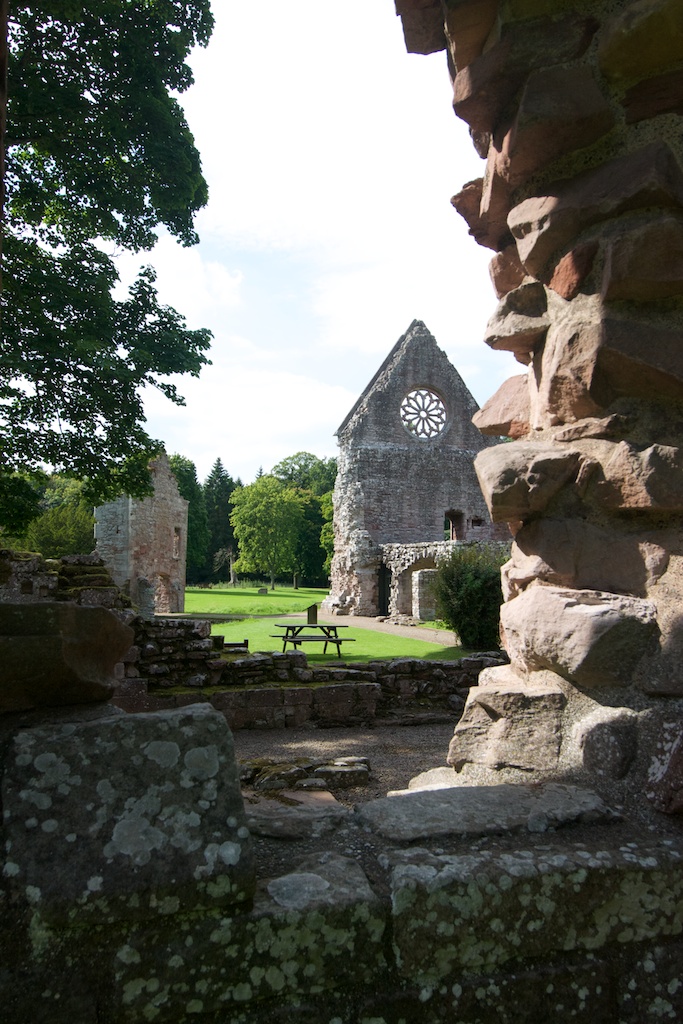
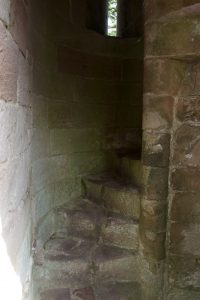
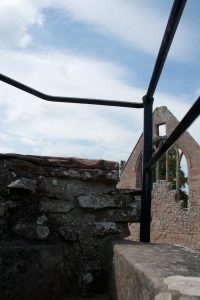
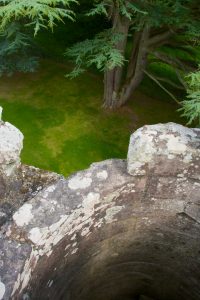
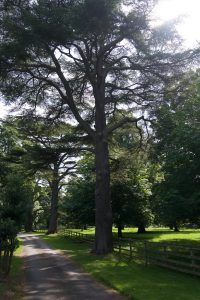
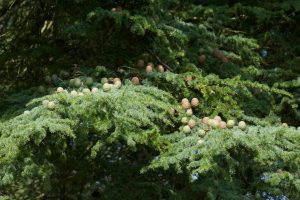
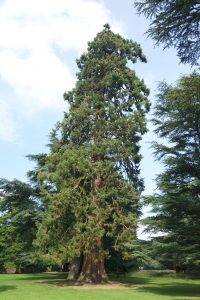
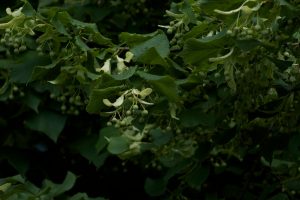
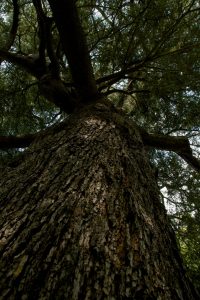
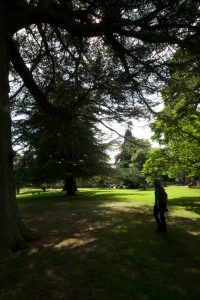

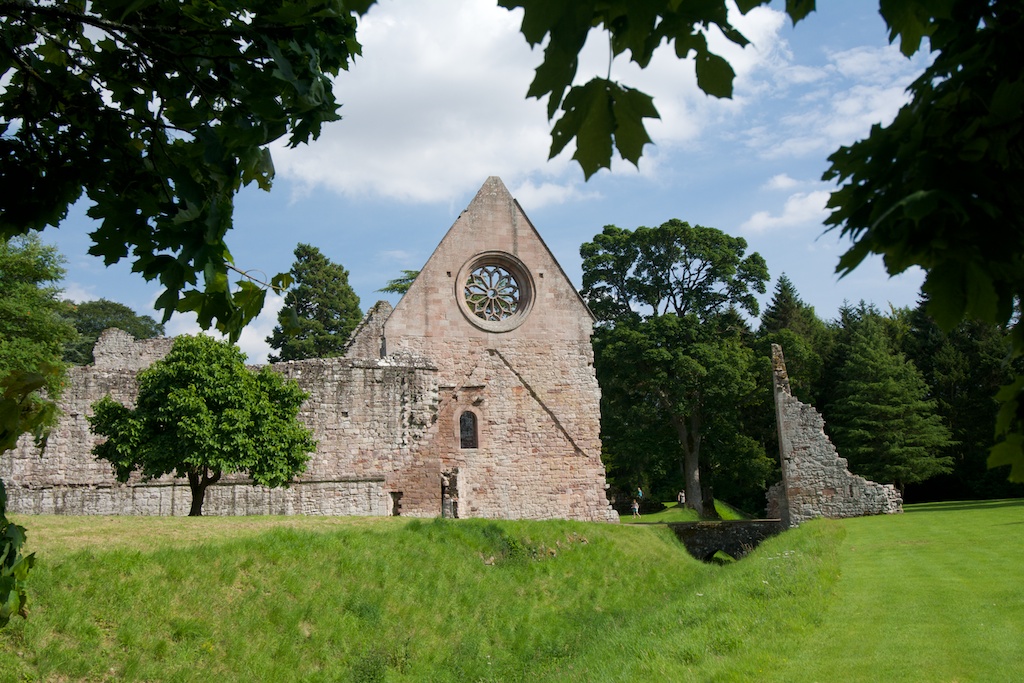

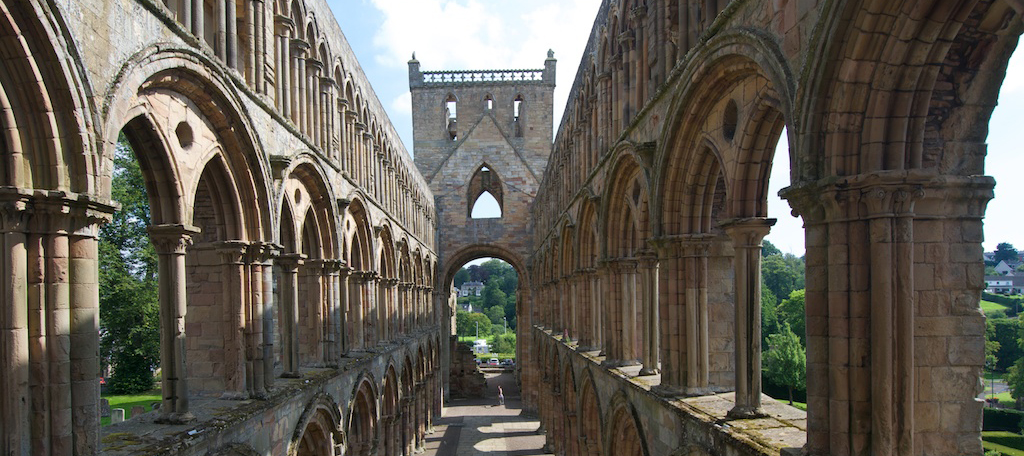
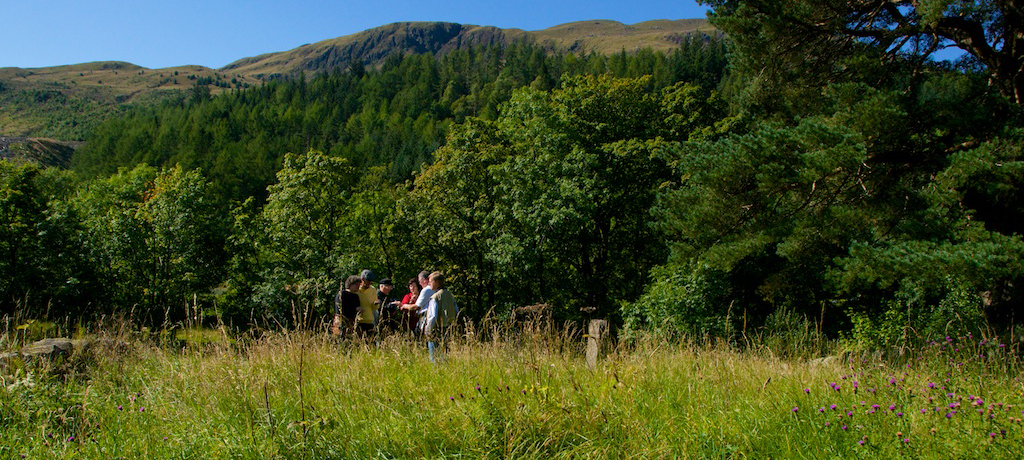
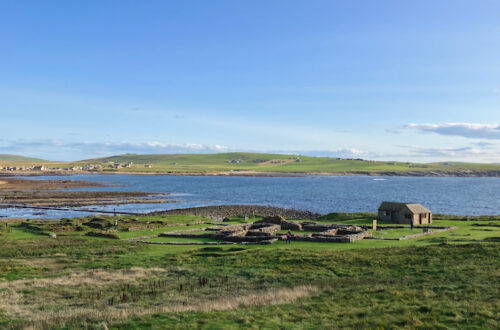
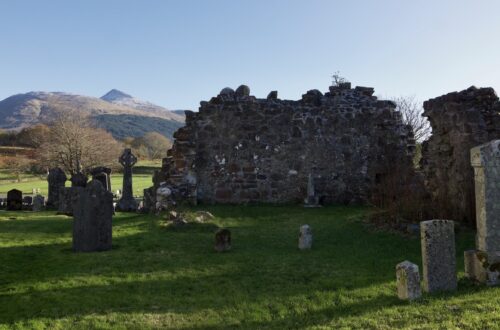
29 Comments
Marie Macpherson
Reblogged this on Marie Macpherson.
moonbreath
Thank you…this brings back fond memories….
Jo Woolf
You’re most welcome, glad you enjoyed it! 🙂
Fife Photos and Art
A very interesting post Jo, with some great photos. I love the way how you describe that you feel like time slows down when standing near large old trees……………..I’d not thought of it in that precise way before, but you have it absolutely spot on!!!
Jo Woolf
Thank you very much, Andy! Glad you enjoyed it. I really loved those old trees. It’s a long time since I’ve seen any that massive. There really is something magical about them! 🙂
Pat
Wonderful photos of one of the most beautiful ruins I’ve seen. But what a troubled past! I know what you mean about the yew. The home I had for many years had yew (yews?) as shrubs in front. It was my job to keep them from growing beyond a certain point. It is much like you said, I believe they exist in multiple dimensions. 🙂
Jo Woolf
Yes, I think you are absolutely right about yew trees, Pat! They know no boundaries. Thank you very much, glad you enjoyed the post! It’s surprising just how peaceful Dryburgh is, when you think of all the troubles it has had.
http://vivinfrance.wordpress.com
Those monks of ancient times could give a great training to modern builders in how to build to last! Thank you for the tour and terrific pictures.
Jo Woolf
They could, Viv – I often think that myself. It was a true labour of love and it didn’t matter how long it took. Glad you liked the post – thank you!
tearoomdelights
I’m amazed that those lovely windows have survived; what a charming place, beautifully photographed. I didn’t know there was such an ancient yew tree at Dryburgh, I really must visit some day. You were brave going up those stairs. :-/
Jo Woolf
Thank you, Lorna! I know, I was surprised about the windows, too – in fact I was doubtful of their age at first, they are so intact. But they are late 12th or 13th century. Those magnificent trees really add to the peaceful atmosphere. Haha, yes, the stairs! I was on a roll that day, as we’d just been up a similar one at Jedburgh – but at least that led to somewhere solid! 🙂
justbod
Another thoroughly enjoyable and beautifully illustrated article – many thanks! How do you manage to visit (and take photographs) when there’s no other visitors? Love your opening question about the ‘deep stillness.’
Jo Woolf
Thank you, Justbod, that’s very kind! There were a handful of other people there but somehow we managed not to get them in the photos! Dryburgh is one of those places that seems to have a lasting effect – the peace kind of stays with you. It’s beautiful.
davidoakesimages
Lucky you….the few times I have been to Dryburgh it has either rained (heavy) or been cloaked in mist……so another location for a nicer day!
Jo Woolf
We certainly were lucky, David. Although I’m sure it is very ethereal cloaked in mist!
davidoakesimages
There is ethereal mist and there is just wet drab mist…we had the latter. Always next time when we are in Melrose
winderjssc
Your posts are always so meticulously researched and interesting to read as well as beautifully illustrated. Thank you.
Jo Woolf
That’s so kind of you to say so, Jessica, and much appreciated! 🙂
blosslyn
Beautiful post Jo, went past this one last year, ran out of time, so its been lovely to read all about it 🙂
Scott Marshall
Usual brilliant resource – seen some shots of this location recently and commented to my wife how little I had done in the south – on the to do list now
Jo Woolf
Thanks, Scott! Yes, you’d love Dryburgh, and Jedburgh Abbey as well – Jedburgh is especially dramatic as you can stand centrally on an upper storey and get the perspective of arches and the tower.
diaspora52
Fab post, Jo! The story about the monks ringing the bells too early, and the attack by the English army is fascinating. Not heard that before! I love the trees there as well. One of my favourite abbeys!
Jo Woolf
Thank you, Jeanette! Yes, it’s such a lovely place – one of my favourites too. I liked the story of the bells – what a stroke of bad luck! 🙂
David McLaughlan
We visited the yew today and I tried to take a photograph with my wife in front of it. But I gave up! Then I read your comment about the impossibility of photographing yews. I laughed and thought, ‘right?!’
Jo Woolf
Haha, I’m sorry for laughing, David, but it is true! It’s like trying to photograph a black hole! I hope you had a lovely time at Dryburgh – such a beautiful place.
David McLaughlan
It is! Dryburgh was a second choice. My wife arranged a surprise visit to Melrose Abbey for my 60th birthday. It was Covid-closed, then open, then closed for repairs or some such. But now that I have seen both, I much prefer Dryburgh. SUCH a feeling of peace! I must confess, I used the word “magnificent” several times – about the trees! Even now, back on the Ayrshire coast, the feeling of Dryburgh lingers in my soul.
Jo Woolf
What a nice way to celebrate your birthday! I love both Melrose and Dryburgh, but I know what you mean about Dryburgh. Perhaps it’s something to do with sitting in a loop of the river, or perhaps it’s deeper than that, but the feeling there is beautiful. Yes, I remember those trees – stunning!
David McLaughlan
Could I please borrow (and credit) your picture of the yew for my little blog (which no one but me knows exists)?
Jo Woolf
Yes, you’re very welcome! Thanks for asking.